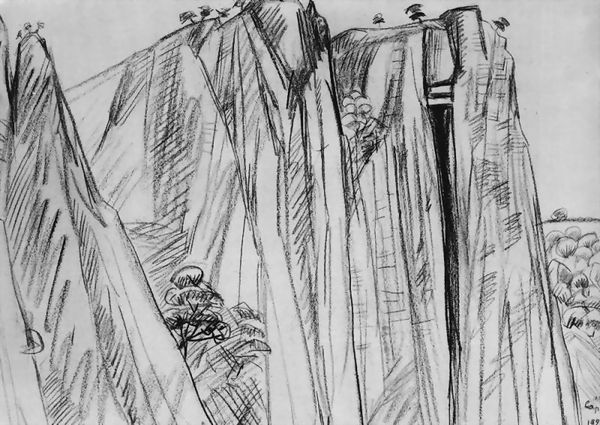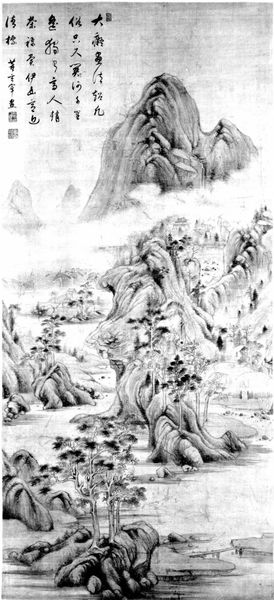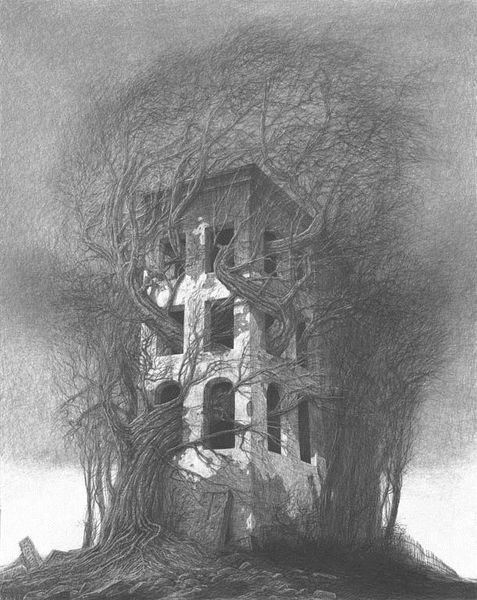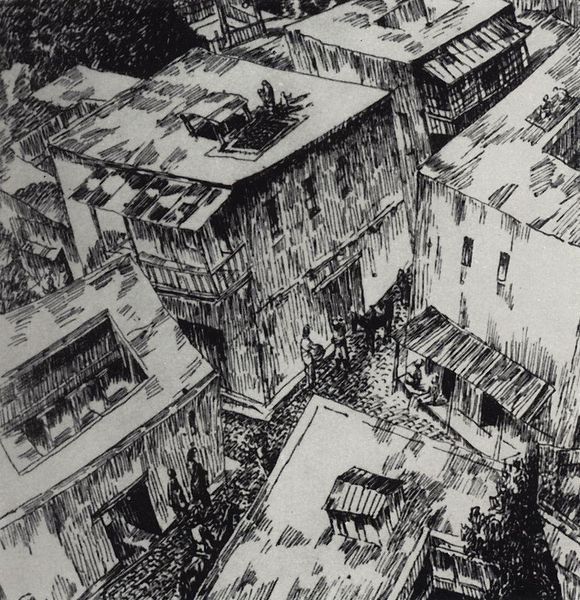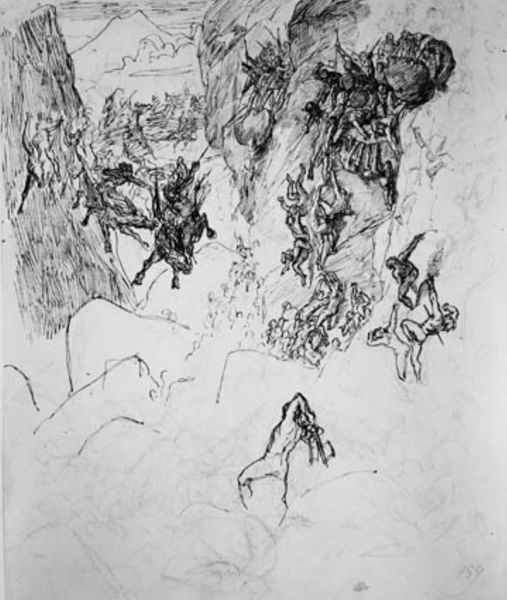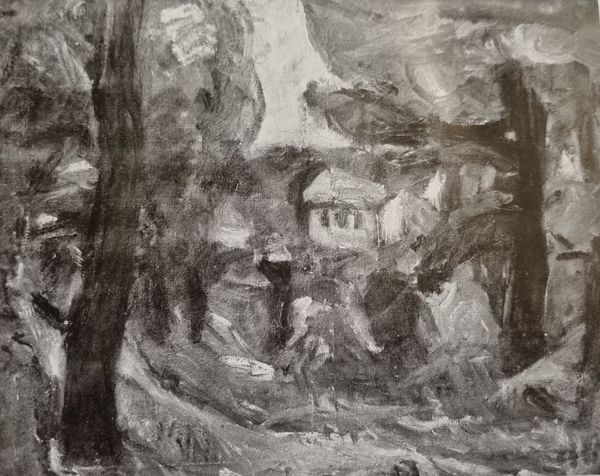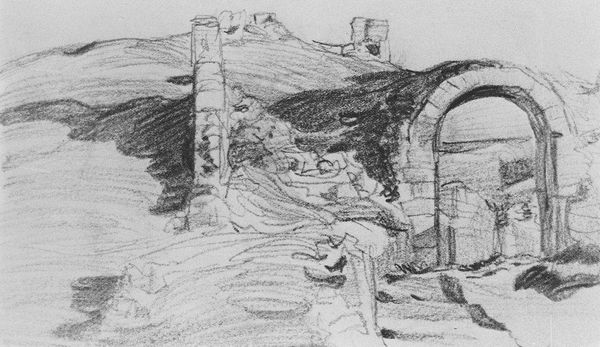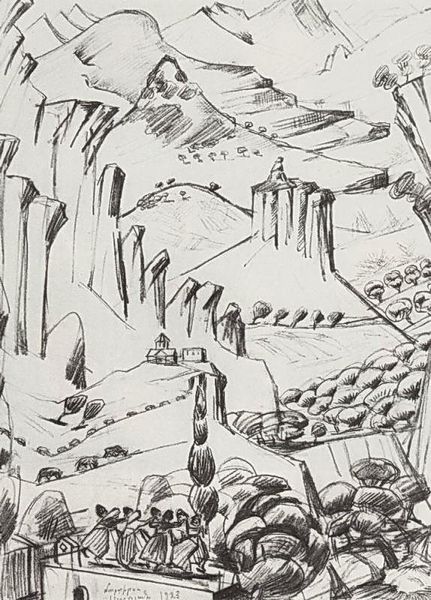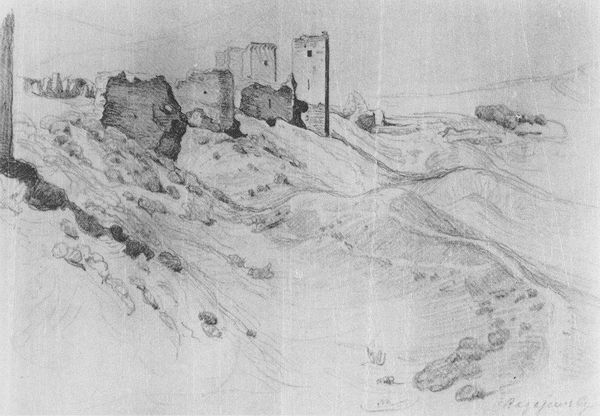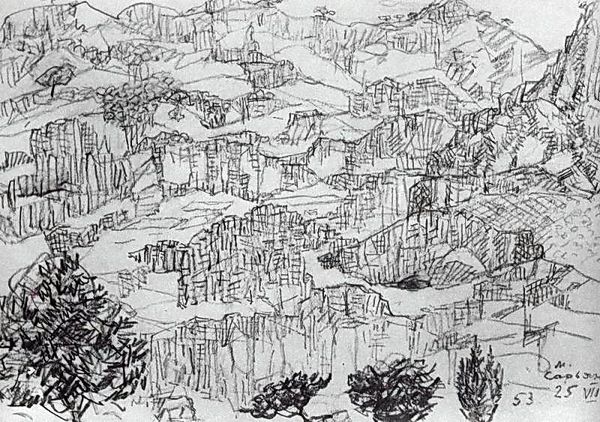
drawing, charcoal
#
drawing
#
pencil sketch
#
war
#
landscape
#
charcoal drawing
#
figuration
#
rock
#
pencil drawing
#
charcoal
Dimensions: 29.5 x 45.4 cm
Copyright: Public domain
Editor: This pencil and charcoal drawing is titled "The first man I saw" by James Tissot. The grey scale lends a certain weightiness to the ruin and figure, and a grim stillness pervades the landscape. What can you tell me about this work? Curator: It strikes me as an incredibly potent anti-war statement. Notice how Tissot depicts the soldier not as a hero, but as a casualty, merging into the desolate landscape. We see the crumbled architecture echoing the fractured state of both the individual and society after conflict. Editor: That’s interesting. So you're saying the destruction in the landscape is a metaphor for the human cost of war? Curator: Precisely. Tissot doesn't romanticize warfare. The drawing invites us to contemplate the violence enacted on bodies, but also on cultural memory. Consider the complete absence of context or story. Who was this man? What war was this? All dissolved into the universality of suffering. The composition almost begs the question: Who benefits? Editor: I never considered that angle before, but it definitely sheds a new light on how the picture speaks about devastation and injustice. Curator: Think about the power dynamics in representing war. Who typically controls the narrative? And how does an image like this challenge that control by focusing on vulnerability rather than victory? Editor: Thank you, seeing the work through this social and historical context really adds depth to my understanding. I appreciate the perspective. Curator: Absolutely. Art like this functions as a mirror reflecting uncomfortable truths about ourselves and our world, challenging us to consider our roles in systems of power.
Comments
No comments
Be the first to comment and join the conversation on the ultimate creative platform.

